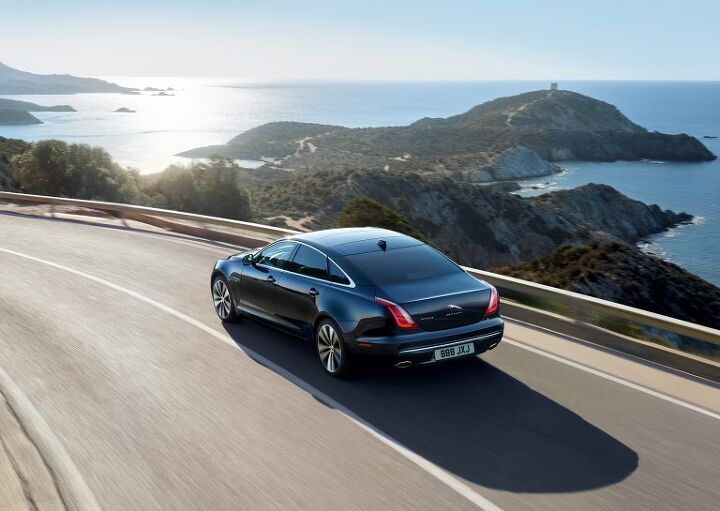Jaguar to End XJ Production; Company Promises a Resurrection

Once the sedan of choice for discerning Anglophiles and 1980s crime-fighting New Yorkers played by Edward Woodward, Jaguar’s XJ has seen a long fall from grace. This summer, the stately model officially hits the ground.
Amid tanking sales for both it and its sedan stablemates, the Jaguar XJ will cease production in a matter of months, with the automaker claiming its death is merely a passing phase.
Confirmed by a Jaguar spokesperson via Jalopnik, the end of the XJ’s 51-year production run this summer paves the way for the future introduction of a different take on British luxury motoring.
In a statement, the spokesperson said Jaguar will “continue the XJ nameplate and will use its renowned engineering capability and technological innovation to ensure its longevity.”
If you’re thinking all of those Autocar reports were right, you’re probably correct. The British publication has long forecasted the impending death of the XJ and its rebirth as an electric vehicle, possibly one containing a hatchback. Design boss Ian Callum and his team are reportedly working on something that bears no similarities to the XJs of old.
Which is too bad, as the pre-2004, steel-bodied XJs are gorgeous creatures you probably don’t want to own — and certainly don’t want to work on. Updating your image, however, requires a change of clothes. The automaker has already made waves in the emerging green vehicle market with its I-Pace SUV, and an all-electric XJ fastback five-door would need to leave the past in the rear-view to tempt the younger, forward-thinking set that will supposedly buy this vehicle.
Europe’s newfound disdain for internal combustion vehicles has made going electric (or partially electric) essential to the survival of many models. Thankfully, Jag has the platform and related tech to swap the XJ into a new persona. It’s probably best to get the transition out of the way before Mercedes-Benz, BMW, and Audi go the same route.
With the model ending production at the UK’s Castle Bromwich plant this year, a successor can’t be too far away.
The XJ peaked in the U.S. in 1986 (the year after The Equalizer first aired), selling over 19,000 units that year, only to see its fortunes fall in the following decades. The last time U.S. buyers took home more than 10,000 XJs in one year was 2004. Last year’s sales tally amounted to just 1,579 vehicles, the worst showing since the recession year of 2009, with some months returning double-digit sales.
In April, 93 American nonconformists drove away in a new XJ.
[Images: Jaguar Land Rover, Murilee Martin/TTAC]

More by Steph Willems
Latest Car Reviews
Read moreLatest Product Reviews
Read moreRecent Comments
- Blope Cataluna Red Audi Etron and a Red Golf TDI Wagon
- Vulpine Considering the size of modern full-sized pickup, they NEED the ability to "squat" just to be able to load/unload them from the rear. It's a law that needs to be contested for the utility of the capability, despite the fact that... yes, it can be abused by show--offs.
- SCE to AUX I have two bright blue Hyundais at the moment, and I've only had one red car.I think I've had 7 white cars. My very first car was orange.A friend once said he buys the ugliest, or most garish color on the lot, to try and get a better price on a dealer dud. It also makes the car easier to spot in a sea of gray vehicles. I couldn't do that, but I see the logic.
- Bd2 For the medium to long term, not much as other automakers are building out their own charging network whether via the consortium or on their own (some, like Mercedes are doing both).
- ToolGuy Let's count the poor decisions: Honda 18 model years past peak Honda. Ohio. Following too closely ('rock on the highway' doesn't leap up and attack your vehicle by itself, it is riding on a vehicle or thrown up by a vehicle, and you should be alert to this). Ohio. Not enough doors. Choosing to expand family -- in Ohio. 😉 Also not great at math.Engine bay picture: At least take a shower before your glamour shot lol.




































Comments
Join the conversation
Electric Jag? I guess they'll call it the e-Type.
Chances are, the XJ will be brought back as a Navigator-sized 3 row crossover with a giant cat on the hood that does double duty as a forward collision sensor.